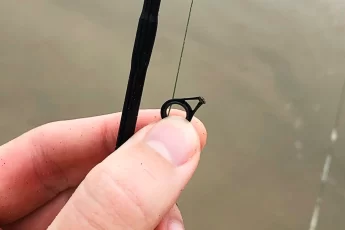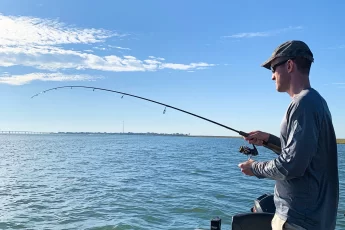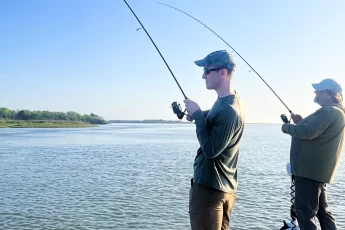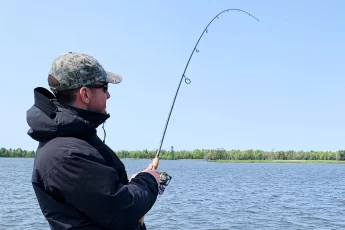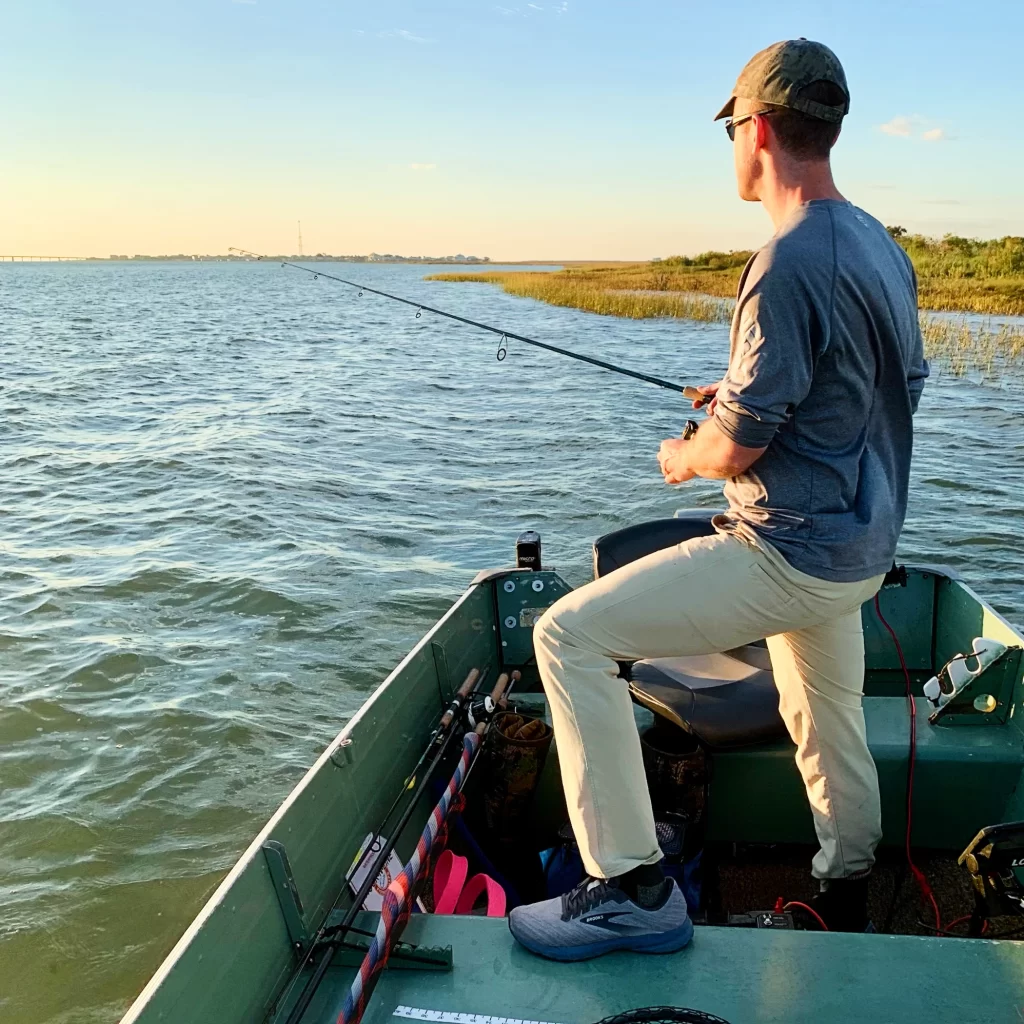
Selecting the appropriate fishing rod action is crucial for optimizing your angling experience. This guide aims to explain rod actions so you can select the right rod for your needs.
We’ll explore the significance of rod action, the effects of rod blank materials, and the practical considerations for various fishing scenarios. Whether you’re targeting specific species, using particular lures, or considering your experience level, we provide insights and pro tips to guide your choice.
Dive in to enhance your knowledge and ensure you select the rod action that best suits your needs, improving your casting, lure presentation, and success in landing fish.
*Disclosure: I only recommend products I would use myself and all opinions expressed here are my own. This post may contain affiliate links that at no additional cost to you, I may earn a small commission.
Table of Contents
- What is Fishing Rod Action?
- Definition and Significance
- Diagram of Fishing Rod Actions
- Popular Rod Actions
- How Rod Blank Materials Affect Rod Action
- Overview of Rod Materials
- Influence of Material on Action and Performance
- Factors Influencing Rod Action Choice
- Type of Fishing
- Target Species
- Lure/Bait Size and Type
- Casting Distance and Accuracy
- Sensitivity
- Line and Lure Weight Compatibility
- Personal Preference and Comfort
- Experience Level
- Advantages and Disadvantages of Different Rod Actions
- Recommended Rod Actions for Different Fishing Techniques
- Pro Tips for Choosing the Right Rod Action
- Conclusion
- Frequently Asked Questions
What is Fishing Rod Action?
Fishing rod action refers to the flexibility of the fishing rod and how it bends when pressure is applied to the tip. The action of a rod is a critical characteristic that affects casting, lure presentation, and how fish are fought and landed. Rod action is expressed into three main types: fast, moderate, and slow, although there are variations within these categories such as moderate-fast or extra-fast.
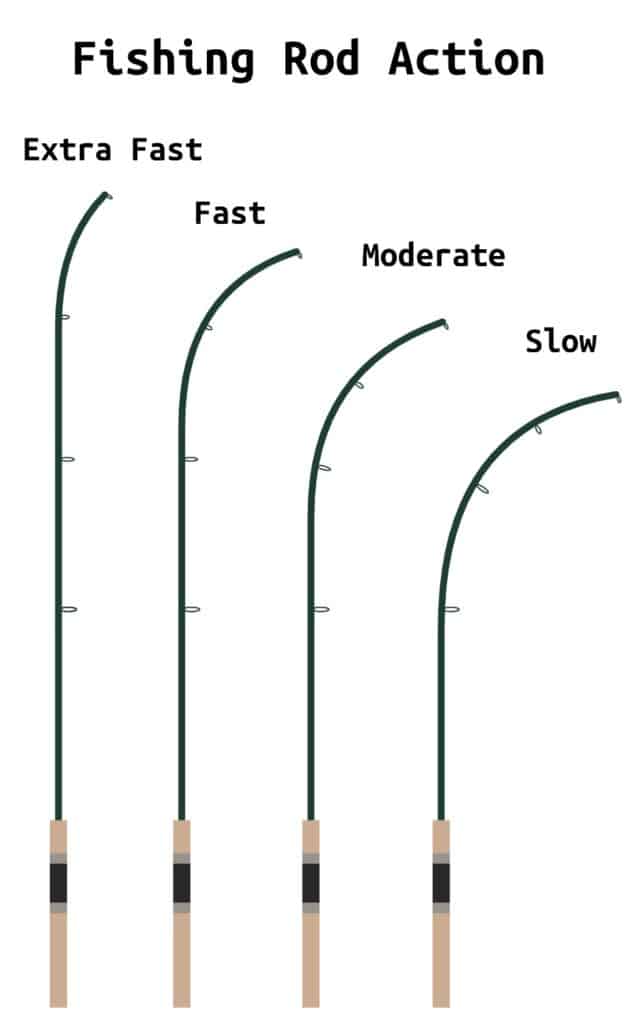
Popular Rod Actions
Here’s a brief overview of the main rod actions:
- Fast Action Rods:
- Bend primarily near the tip: Fast action rods bend mostly in the upper third or less of the rod. This design provides a stiff backbone for powerful hooksets and is excellent for situations where anglers need sensitivity and quick power to pull fish away from cover.
- Applications: Ideal for single-hook lures, such as jigs and worms, where a strong hookset is needed. They’re also preferred for fishing in heavy cover or when targeting large fish with a lot of fight.
- Moderate Action Rods:
- Bend in the top half: Moderate action rods bend in the top half of the rod. This action offers a balance between casting distance and accuracy, sensitivity, and the power needed for hooksets. It provides a versatile performance suitable for a wide range of fishing techniques.
- Applications: Great for multi-hook lures like treble-hooked crankbaits and for situations that require a blend of casting accuracy and lure action. They’re also effective for both casting and fighting fish, providing a good balance that works well for many species.
- Slow Action Rods:
- Bend throughout the entire length: Slow action rods bend evenly along their entire length, right down to the handle. This action makes them very flexible and forgiving, offering a smooth casting experience with a lot of bend.
- Applications: Best suited for light bait and lures, delicate presentations, and when fishing for smaller species. The bend of a slow action rod is particularly useful for absorbing the force of a fighting fish, reducing the likelihood of line breakage or hook pull-out.
Understanding the action of a fishing rod is crucial for selecting the right rod for specific fishing conditions and techniques. The choice of rod action affects how well an angler can cast, how effectively they can present their lure or bait, and their success in hooking and landing fish.
How Rod Blank Materials Affect Rod Action
The material of a rod blank significantly influences its action, sensitivity, and overall performance. Rods are primarily made from graphite, fiberglass, or a composite blend of both.
Graphite rods are known for their stiffness, sensitivity, and faster action, making them ideal for applications requiring precise lure control and quick hooksets. They are lighter and more responsive, allowing anglers to detect even the slightest nibbles.
Fiberglass rods, on the other hand, tend to have a slower action due to their flexibility and durability. They are often heavier but offer a greater degree of bend and forgiveness, which is beneficial for fighting fish and using lighter lures.
Composite rods try to blend the best of both worlds, offering a balance between sensitivity and durability..
The choice of rod material can directly affect an angler’s ability to cast accurately, detect bites, and successfully land fish, making it a crucial consideration alongside rod action. Check out our article on rod blanks for a deeper dive into how rod blank materials and design affect rod action.
Factors Influencing Rod Action Choice
Choosing the right rod action is a balancing act of multiple factors. Important considerations include:
- Type of Fishing: The method of fishing you plan to do (e.g., fly fishing, baitcasting, spinning, trolling) can greatly influence the action of the rod you choose. Different fishing techniques require different rod actions for optimal performance.
- Target Species: The size, weight, and fighting style of the fish you’re targeting are crucial in selecting rod action. Larger, more aggressive fish often require a fast-action rod for better control, while smaller species may be better suited to a rod with slower action for a more delicate presentation.
- Lure/Bait Size and Type: The weight and type of lure or bait you intend to use also play a significant role. Heavier lures require a rod with more backbone for effective casting and hook setting, while lighter lures may perform better with a softer, slower action rod that can cast them more delicately.
- Casting Distance and Accuracy: Moderate or slow actions rods feel whippy and allow the angler to really load up the full length of the rod and maximize casting distance. Faster actions tend to provide more accurate casting because the cast is more of a flicking action than a momentous heave of the rod.
- Sensitivity: Fast action rods tend to be more sensitive to light bites, as the stiffness in the lower part of the rod transmits more vibration. This can be crucial for detecting subtle strikes, especially in finesse fishing situations.
- Line and Lure Weight Compatibility: Rods are designed to perform optimally within a specific range of line and lure weights. Choosing a rod action that matches the line and lure weights you plan to use will result in better casting and overall performance.
- Personal Preference and Comfort: Ultimately, the choice of rod action also comes down to personal preference and what feels right for you. Your physical strength, fishing style, and comfort with the rod can all influence which rod action you prefer.
- Experience Level: Beginners might benefit from moderate action rods as they are more forgiving and easier to learn with, while experienced anglers might prefer fast action rods for their precision and power.
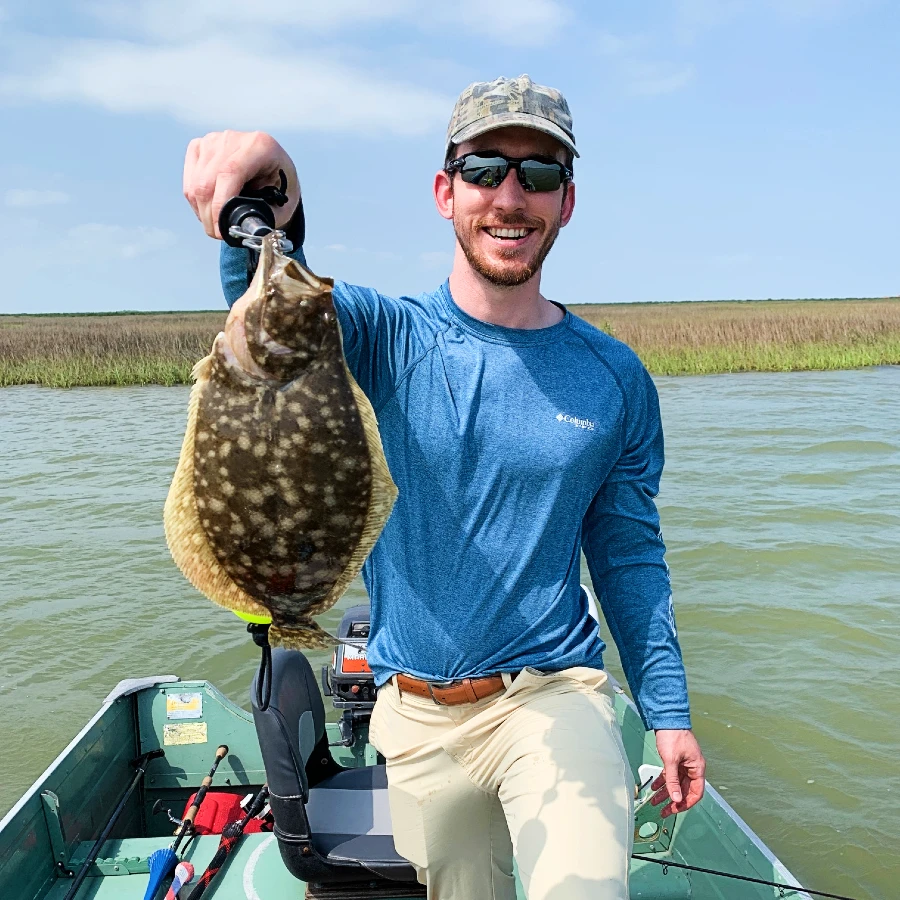
Considering these factors will help you narrow down your options and select a fishing rod action that matches your specific needs, enhancing your overall fishing experience.
Advantages and Disadvantages of Different Rod Actions
The choice of rod action can significantly affect your fishing experience and influences everything from casting ability to how you fight and land fish. Each action has its advantages and disadvantages that are either ideal or non-optimal for different fishing techniques.
Fast Action Rods
Advantages:
- Sensitivity: Fast action rods offer great sensitivity, allowing anglers to feel even the slightest nibbles.
- Powerful Hook Sets: The stiffness near the base allows for strong hook sets, ideal for fishing with single-hook lures.
- Better Control: Provides better control when fighting bigger fish, especially useful in situations requiring the angler to pull fish away from structures or cover.
- Accurate Casting: Suitable for accurate casting.
- Versatile: I find fast action rods can be used for most fishing techniques. It may not be optimal for specific lures like crankbaits, but they can fish most techniques effectively.
Disadvantages:
- Less Forgiving: The stiffness can make them less forgiving with light lines or when fighting fish, increasing the risk of line breakage.
- Not Ideal for Light Lures: Can be challenging to use with very light lures due to the rod’s stiffness. This issue can be alleviated by dropping the rod power while still keeping a fast action.
- Challenging for casting live bait long distances: Due to the stiffness of fast action rods, casts tend to accelerate the bait so quickly it can eject live bait from the hook. This can be super frustrating!
Moderate Action Rods
Advantages:
- Balanced Performance: Offers a good balance between casting distance and accuracy, sensitivity, and power for hooksets.
- Good for Treble Hooks: Ideal for lures with treble hooks, as the increased bending increases shock absorption during a fish strike improved chances of a successful hookup.
- Good for casting live bait long distances: The increased bend along the length of the rod blank improves odds that live bait will stay on the hook for long-distance casting.
Disadvantages:
- Less Sensitivity: May not provide as much sensitivity as fast action rods for detecting light bites.
- Slower Hook Sets: The increased bend can lead to slower hook sets for techniques like single-hook soft plastic baits, potentially missing fast-striking fish.
- Compromise: Being a jack-of-all-trades, it may not excel in situations where a specialized rod action would perform better.
Slow Action Rods
Advantages:
- Great Flexibility: Bends throughout the entire length, making it very flexible and ideal for casting light lures and baits.
- Forgiving: The flexibility offers a cushion against sudden tugs or pulls, reducing the risk of line breakage or losing fish.
- Smooth Casting: Provides smooth casting, especially useful for beginners or when a delicate presentation is needed.
- Maximum Shock Absorption: Great for light baits for small fish. Both for casting and reeling in smaller fish, the bend along the full length of the rod blank provides a huge amount of shock absorption.
Disadvantages:
- Less Power for Hook Sets: The flexibility can make powerful hook setting more challenging, especially with larger or more aggressive fish.
- Not Suitable for Heavy Cover: The lack of stiffness makes it difficult to control fish in heavy cover or to execute powerful hook sets needed for certain fishing conditions.
Selecting the right rod action depends on the specific fishing situation, your target species, and personal preference. Understanding the trade-offs between different rod actions can help you make a more informed choice that matches your fishing style and goals.
Recommended Rod Actions for Different Fishing Techniques
Check out this table of recommended rod actions for popular fishing techniques. I’ve also included links to some of our in-depth rod guides on popular rods for these specific techniques.
| Fishing Technique | Recommended Rod Action | Reason | Recommended Reading |
|---|---|---|---|
| Jigging | Fast | Requires a stiff rod for quick, powerful hook sets and sensitivity to detect bites. | Best Bass Jigging Rods Best Ultralight Rods Best Walleye Rods |
| Spinnerbaits/Buzzbaits | Fast | Balances the need for sensitivity and power, allowing for accurate casts and effective hook sets. | Best Bass Rods Best Inshore Rods |
| Topwater Lures | Fast | Provides the responsiveness needed for lure action and quick hook sets on surface strikes. | Best Redfish and Speckled Trout Rods Best Bass Baitcasting Rods |
| Crankbaits | Moderate | The moderate bend allows for the absorption of fish strikes, reducing the risk of pulling the lure away from the fish. | Best Bass Rods |
| Soft Plastics (Texas Rig, etc.) | Fast | Offers the sensitivity to feel light bites and the backbone for solid hooksets in weedless fishing scenarios. | Best Bass Rods Best Bass Spinning Rods |
| Fly Fishing | Slow to Moderate | A softer action is preferred for the delicate presentations of flies and for playing fish on lighter lines. | |
| Trolling | Moderate | Requires a rod that can withstand the constant pressure of trolling and powerful strikes from moving fish. | Best Trolling Rods |
| Drop Shotting | Moderate to Fast | Allows for sensitivity to detect subtle bites and flexibility for playing fish on light lines. | Best Bass Rods |
| Surf Fishing | Moderate to Fast | Needs to cast long distances while providing enough power to fight large fish. | Best Surf Rods Best Pier Rods |
| Ice Fishing | Moderate to Fast | Offers sensitivity for detecting light bites under ice and enough backbone for hook setting. | |
| Catfishing | Moderate to Fast | Provides the strength needed for casting heavy baits and battling large, powerful fish. | |
| Bass fishing in heavy cover | Fast | Essential for pulling large fish out of heavy cover with strong, immediate hook sets. | Best Flipping & Pitching Rods Best Frog Rods |
| Ultralight Fishing | Slow to Moderate | Maximizes the enjoyment of catching smaller fish on light tackle, enhancing casting distance for light lures. | Best Ultralight Rods Best Panfish Rods |
Pro Tips
Choosing the right rod action is crucial for enhancing your fishing experience, improving your casting accuracy, and increasing your success rate with hooksets and landing fish. Here are some professional tips to help you select the ideal rod action for your fishing needs:
- Match the Rod to Your Primary Fishing Technique: Select a rod action that complements your most frequently used fishing techniques. For instance, if you’re into jigging for bass, a fast action rod will provide the sensitivity and quick hook setting power needed.
- Consider the Lure Weight and Type: The weight and type of lures you plan to use should influence your choice. Fast action rods may prove difficult to cast lighter lures.
- Understand Species-Specific Requirements: The popular techniques specific to targeting a fish species influences the right choice of rod action. For example, I would happily take a single, fast-action rod bass fishing because that rod can perform most bass fishing techniques well enough.
- Factor in Casting Distance and Accuracy: If long-distance casting is crucial for your fishing method, a moderate action rod might be preferable. For applications requiring more accuracy and less distance, consider a fast action rod.
- Don’t Overlook Rod Length: While focusing on action, also consider rod length. Longer rods can cast further, while shorter rods offer more precision and control in tight spaces. The rod length can complement the action to suit your specific fishing needs.
- Consider Rod Power: Rod power and rod action work in tandem to provide the optimal fishing experience. Make sure to choose the rod power AND action that work together for your desired fishing technique. For example, I like a fast action when jigging for panfish due to the increased sensitivity. A fast action rod with medium power will provide difficult to cast with light baits whereas a light power rod with fast action would be perfect for this application.
- Future-Proof Your Purchase: Think about your fishing goals and whether you might branch out into different types of fishing. Sometimes, choosing a versatile rod action like moderate-fast can be a wise decision as it offers a good balance for various fishing techniques.
Conclusion
In conclusion, understanding and selecting the right fishing rod action is fundamental to enhancing your fishing experience. By considering the various factors outlined in this guide, like the type of fishing, target species, lure or bait size, and personal preferences, you can make an informed decision that significantly impacts your ability to cast accurately, present lures effectively, and successfully land fish. Remember, the ideal rod action varies depending on your specific needs and situations. Fast action rods offer sensitivity and power for precise techniques, while moderate and slow actions provide versatility and forgiveness for a wide range of fishing styles. Ultimately, the right choice will not only improve your performance on the water but also increase the enjoyment of your fishing adventures. Whether you’re a seasoned angler or just starting out, taking the time to understand rod action is important to optimize your fishing endeavors.
Check out some of our other popular guides to understanding fishing rods:
- How to Choose a Fishing Rod
- How to Choose Fishing Rod Length
- Fishing Rod Blanks Explained
- Fishing Rod Guides Explained
- Fishing Rod Maintenance and Care Guide
Frequently Asked Questions
How to choose between fast, moderate, and slow action rods?
Select fast action for better sensitivity and strong hooksets, ideal for heavier lures and techniques requiring precision. Choose moderate action for a versatile experience suitable for a variety of lures and conditions. Opt for slow action when using light lures and seeking gentle casts and a forgiving fight.
Can one rod action fit all fishing types?
While no single rod action is perfect for all types of fishing, I recommend a fast action rods as a good all-around option that can perform most types of angling well enough.
How does lure or bait type affect rod action selection?
The weight and design of your lure or bait influence the ideal rod action. Fast action rods are suited for heavier lures requiring precise control, whereas slower action rods are better for lighter, more delicate presentations. Additionally, lures with treble hooks, like crankbaits, are preferable with moderate actions because the increased rod bend adds shock absorption to the system which improves hooksets with these types of bait.
What’s the relationship between rod action and sensitivity?
Rod action affects sensitivity, with fast action rods offering greater sensitivity to detect subtle bites, making them suitable for techniques where feel is crucial. Slow action rods, while less sensitive, are more forgiving and better for absorbing the force of a fish’s fight.
Are certain rod actions better for beginners?
Beginners may benefit from using moderate action rods due to their ease of use and versatility, making them suitable for learning various fishing techniques without specializing too early. Fast action rods may require a more refined casting technique to load the rod during the cast where moderate actions may feel easier for a beginner to pick up and successfully cast.
How do rod materials affect action?
The material of the rod, such as graphite or fiberglass, determines its overall flex and action. Graphite rods are typically lighter and offer faster actions with higher sensitivity. Fiberglass rods are more durable and tend to provide a slower action.
Does rod action impact casting distance?
Yes, the action of a rod influences casting distance. Slower action rods load much more of the rod length during the cast, making it easier to cast long distances. Moderate and slow action rods will feel whippier to the angler and it will feel like you can cast the same distance with less effort when compared to a fast action rod of similar specifications.
How to match rod action with line and lure weight?
Matching rod action to the recommended line and lure weight ensures optimal performance. A mismatch can lead to poor casting, reduced sensitivity, and an increased chance of breaking the line or rod.
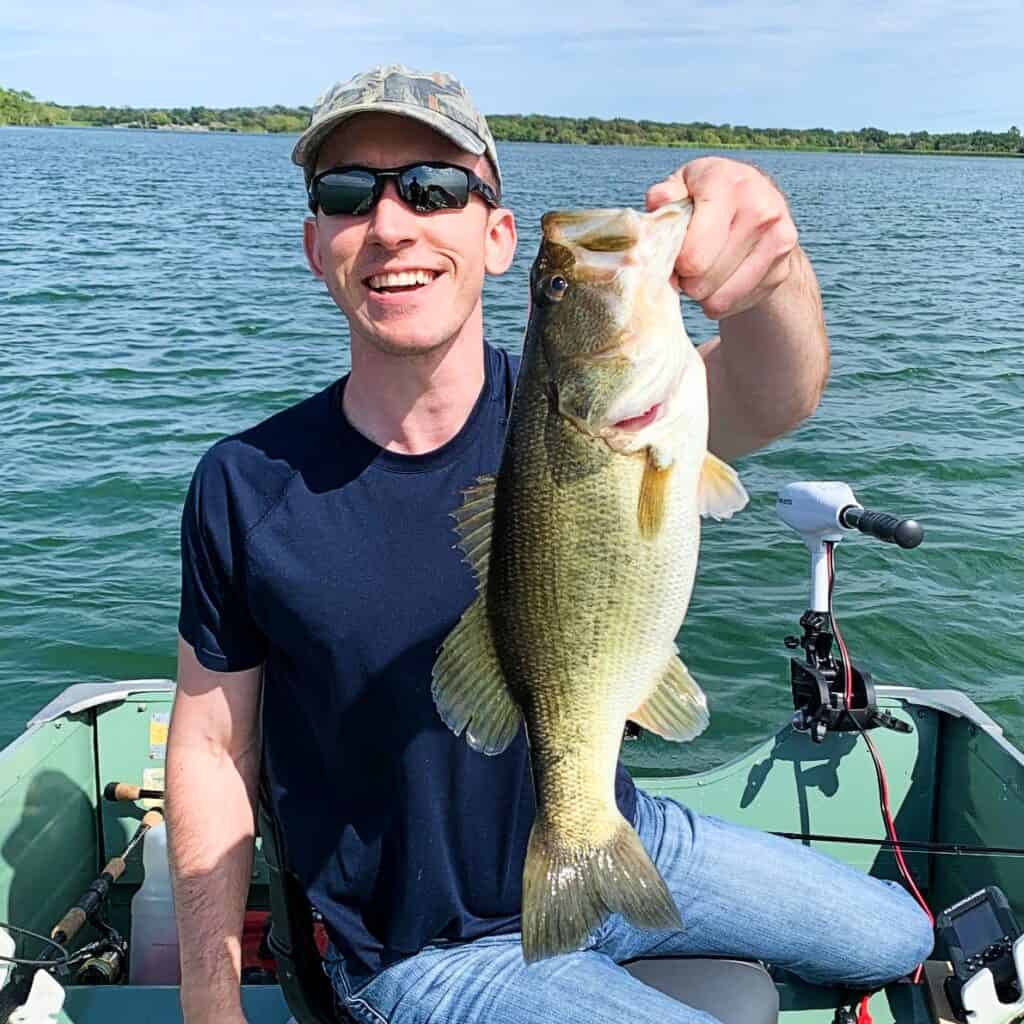
Written By: Andrew Juran
Andrew is a seasoned angler with over 25 years of experience fishing across the United States. He has caught hundreds of fish using various techniques and mentored many in the art of fishing. An advocate for sustainable fishing, Andrew is an active member of the Coastal Conservation Association, an organization committed to marine conservation.
For frequent fishing tips, behind-the-scenes looks, and real-time catches, connect with Andrew on Instagram


